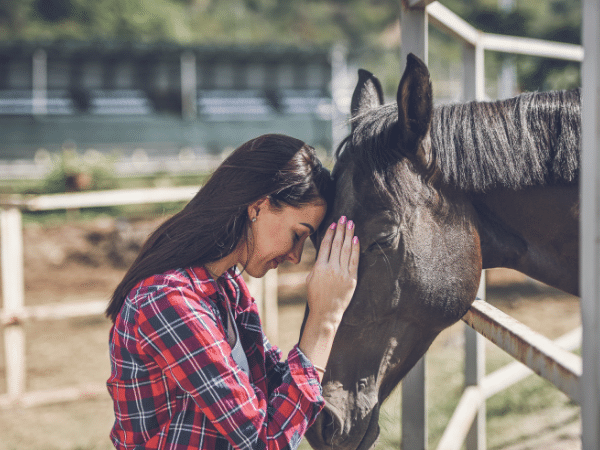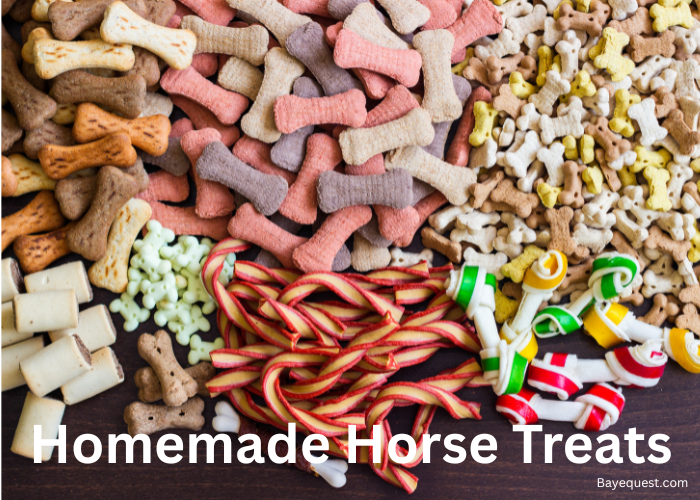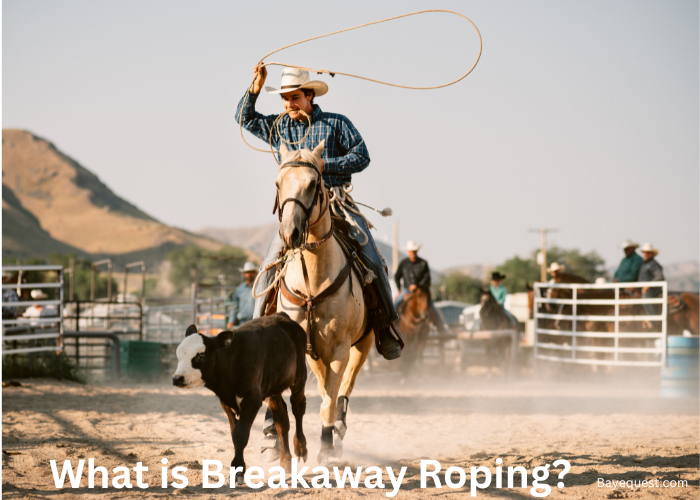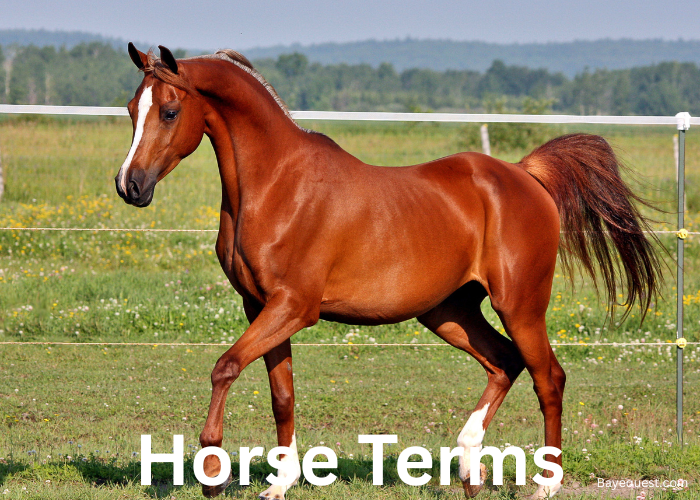Horses form strong bonds with their trainers and owners (or guardians), whom they consider part of the herd. Why? Because they depend on the guardian for companionship and security.
Moreover, the guardian is technically the leader of the herd. Therefore, the horse will always try to please you. They’ll seek your attention and always wait for your guidance. Most importantly, the horse will always want to be around you. Thankfully, it’s a mutual relationship that benefits the guardian too.
But what if your horse behaves differently? Is there anything you can do to improve the relationship? This guide explores a few dos and don’ts to set you on the right path.
Benefits of a Strong Horse-Guardian Bond
A strong bond benefits both the horse and the guardian. The following are a few ways each party can benefit from a thriving relationship;
- Psychological benefits for the guardian: A strong relationship with your horse has many psychological benefits. For example, it reduces stress and improves mood. Additionally, the relationship improves emotional regulation and boosts self-esteem. Equine bonds can also treat anxiety and depression.
- Easier, more enjoyable handling: Horse handling is laborious and occasionally stressful. It’s also risky. But not when you have a strong bond. The horse will smell you from a distance and enthusiastically respond to your requests. There’s also minimal risk of wayward behavior, such as jumping or kicking.
- Improved performance: This is especially evident among racing and show horses, though you can also tell the difference when riding or driving. Teamwork is critical in these circumstances; everything breaks down when you’re not in sync. That’s why a strong bond is crucial.
- Therapeutic benefits for the horse: Horses benefit greatly from strong bonds. For example, they experience less stress and anxiety, leading to a higher quality of life. They also heal faster and feel safer.
Factors Affecting Human-Horse Relationships
The bond strength between you and your horse depends on several factors. We’ll cover only a few;
- Communication: Horses can communicate. However, humans must take time to learn their body language and subtle cues and respond appropriately. Similarly, you must teach the horse to understand your instructions and respond promptly.
- Trust: Does the horse trust you? Do you trust them? You can’t bond deeply if either of you doesn’t trust the other. So, the first step is to spend time with each other, understand their needs, and find out how you can help.
- Horse breed: Horses are not the same. Some, especially ponies, are kind and naturally friendly. So, they bond with the guardian fairly quickly. Meanwhile, fiery breeds like the Arabian can take ages to form a tight bond with the owner or trainer.
- Availability: Bonds depend on how much time you spend together. More time spent together naturally results in tighter bonds. Meanwhile, unavailable partners often result in weak or shaky relationships.
Horse Bonding Dos
Everyone approaches the bonding process differently, depending on the above factors. Nonetheless, the basics are the same;
Spend quality time together
We build and make memories together, not apart. So, you should aim to spend many hours with the horse every week.
The best approach is to spare half an hour or so daily to bond with the horse. But consider a more workable plan if your busy schedule doesn’t allow daily bonding. For example, you can say hi every time you return in the evening and set aside a few hours to spend together during the weekend. Alternatively, spend some time with the horse every morning before work.
It’s just as important to make the engagement worthwhile and enjoyable. For example, riding and driving aren’t the greatest ways to spend “quality” time together as the horse is technically working. Instead, make it a no-work-involved session where you have fun and speak to each other.
Grooming time is bonding time
A clean horse is a healthy horse. Therefore, you should follow a strict grooming schedule. But more importantly, grooming time is a great opportunity to get closer to your horse and forge a stronger bond.
You can learn a great deal during this short period. For example, you may discover a few things the horse likes or dislikes. Do they like one specific detergent? Do they prefer scrubbing in a particular direction? Do they prefer morning or evening scrubs?
Additionally, you may uncover wounds and injuries requiring attention. The horse will observe keenly to see how you react. Showing deep sympathy for their pain and providing quick medical attention will earn you additional trust points.
We recommend a good scrubbing once a day. But you can do it once a week or before every ride, depending on your routine.
Training starts with groundwork
Though horses are happy to ride with you, studies show that groundwork has a bigger impact on human-equine relationships.
First, leading your horse with a halter and rope reminds them of your leadership role. They learn that you’re in charge. This is critical for herd animals that depend on an alpha. They look up to the leader for direction and are lost without a leader.
Additionally, with the boundaries set, the horse must now respect you. They must take your instructions and wait for your directions. But more importantly, they learn to trust you.
This is very important as it sets the tone for the relationship. For example, you may remove a few obstacles as you walk. Additionally, you’ll naturally lead the horse from potentially dangerous paths. This teaches the horse that you care for them and will always go out of your way to keep them safe, increasing their trust in you.
See: Horse Breaking Meaning.
Be patient and consistent
Ideally, the horse should do exactly as you say. For example, if you ask the horse to jump four steps, they shouldn’t do six just because they’ve got the energy. It’s disobedience. Similarly, if you ask them to turn right, right it is.
This is especially true for competitive horses but equally important for other horses, as it can be life-saving in certain circumstances.
But there’s only one way to achieve perfection: patience and consistency. Tell the horse exactly what you want. Then, give them the chance to respond. If they get it wrong the first time, repeat the instruction using the same cues and signals and allow them to try again. It breeds trust and empathy.
Learn the horse’s cues and body language
Communicating with horses is a two-way process. Each party gets to speak or give clues about their needs, and the other party listens and responds accordingly. Therefore, you must understand the horse’s language, consisting mostly of cues and body language.
For example, horses snort and spook when anxious. You need to figure out why your horse might be unsettled at that point. Why do they feel threatened? Do they sense danger? Do they see a potential predator?
More importantly, you must know how to address or respond to the cues. For example, removing visible threats can reduce anxiety and distress. Alternatively, distract the horse if you cannot immediately determine the cause of their anxiety. Exercises that engage the whole body are excellent distractions.
Your mood has a big impact
Horses are intelligent animals that often mirror the guardian’s mood. Similarly, they expect you to mirror their mood in time of need.
For example, horses can easily sense when you’re nervous. They can also tell when you’re angry. Interestingly, they’ll mirror the emotional state right away. It’s herd behavior, like sheep escaping danger. Everyone runs, including those who haven’t seen the source of danger.
This is both good and bad. On a positive note, having your special companion share your feelings is comforting. But on the flip side, handling a nervous horse is challenging.
Therefore, mind your emotional state around the horse. A false smile is better than a frown if you want to see a happy horse. More importantly, remember the horse expects you to pay back in kind. This means showing remorse when they’re in pain and vice versa.
Practice positive reinforcement
Rewarding the horse for positive behavior can significantly improve your relationship. It encourages the animal to repeat the desired behavior. Additionally, it motivates the horse and increases self-confidence. Above all, it’s among the best ways to let your horse know they’ve passed the test.
For example, suppose you ask the horse to jump four times. You can reward them with a treat if they do exactly that. However, they get nothing if they don’t follow the instructions.
Similarly, you can reward the horse when they get up quietly and feed calmly without grabbing the meal. A few people argue against it. But it teaches the horse that it’s more rewarding to behave in a certain way.
It’s almost similar to classical conditioning and works perfectly for selected disciplines. But be warned that positive reinforcement works best alongside other training formulas.
Horse Bonding Don’ts
Anything that goes against the Dos is a don’t. However, the following are the most important horse bonding don’ts to avoid for a thriving relationship.
Don’t hurry or force anything
A common question among first-time guardians is – how long should I wait? Perhaps you’ve been trying for a few weeks with little to show for it. The horse doesn’t seem to recognize you and never follows your instructions. How much longer should you wait?
Unfortunately, there’s no straightforward answer. Just like humans, every horse is unique. Some don’t even like humans, and others, like Arabians, are single-owner breeds that struggle to bond with successive guardians.
Try a little longer, ideally for 2-4 months. If there’s no progress after four full months of spending 1-2 hours a day with the horse, it’s time to consult a professional.
Interesting read: Breeding mares.
Don’t overwork the horse
Horses are happy workers, including the little ponies. They’ll ride, carry, and drive joyfully, provided they’re in good health. Similarly, racing and show horses are excited to jump into the arena. But timing is key.
An excellent example is attempting to ride an underage foal. Riding naturally starts at three years of age. But a few people are too excited to wait. So, they may be tempted to jump onto a 2-year-old foal “for a few minutes.”
This is unfair and unethical. But more importantly, horses have excellent memory. If you mistreat them, they’ll remember it for a long time and repay you in kind. One way they react to mistreatment is disobedience.
Don’t punish horses inconsiderately
Negative reinforcement is a powerful tool in horse training. It helps the animals make better choices and is a practical way to encourage good behavior.
However, there’s a line between negative reinforcement and punishment. Negative reinforcement takes away something to encourage good behavior. Meanwhile, punishment (also known as positive punishment) involves adding an unpleasant consequence to discourage the behavior.
While both can work, punishment presents many challenges because it can cause negative associations and even negatively impact relationships. Above all, most punishments inflict physical pain, potentially causing injuries.
For example, whipping the horse to discourage kicking may work. But at what cost? You risk injuring the animal. Furthermore, can the horse trust you after a painful whipping?
FAQs
What’s the Fastest Way to Bond with a Horse?
Spending quality time with the animal is the fastest way to bond with a horse. You want to spend a few minutes with them in the morning before you leave. Then, spend a few minutes with them again in the evening and a few hours over the weekend. It tells the horse that you love and want to be with them.
How Do You Bond with a Stubborn Horse?
The most effective strategy when bonding with a stubborn horse is to take things slow. Allow them to get over their fears slowly. It can take months. But it happens eventually. In addition, spend a lot of time with the horse and vary your settings. Maybe it’s the stable, not you.
Final thoughts
Horses are happiest when we have a bubbling relationship with them, allowing us to understand and provide for their needs easily. But you can only forge a strong bond by understanding what works and what doesn’t. Now, you know where to start.








